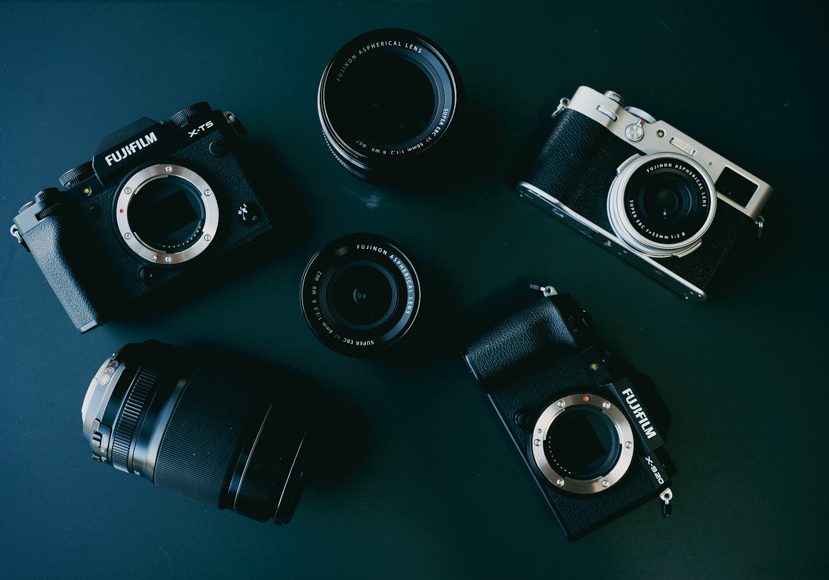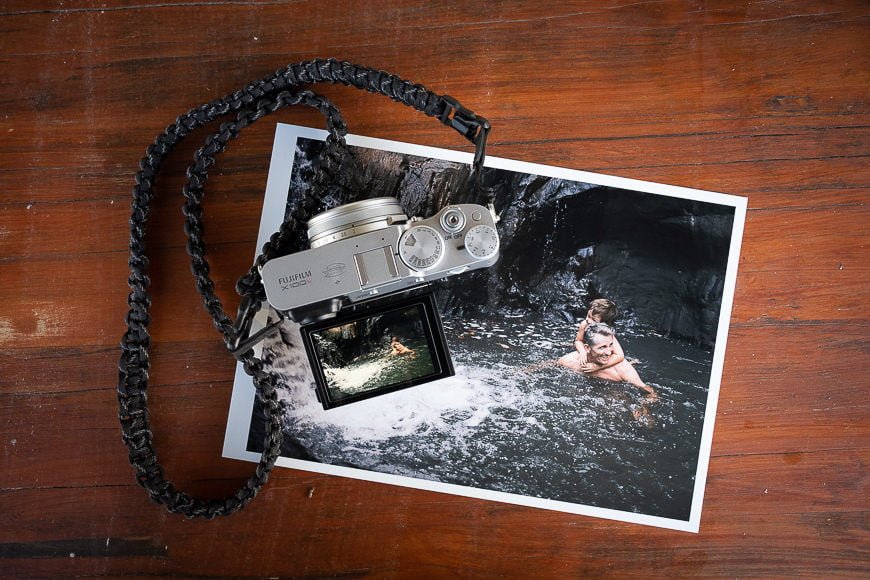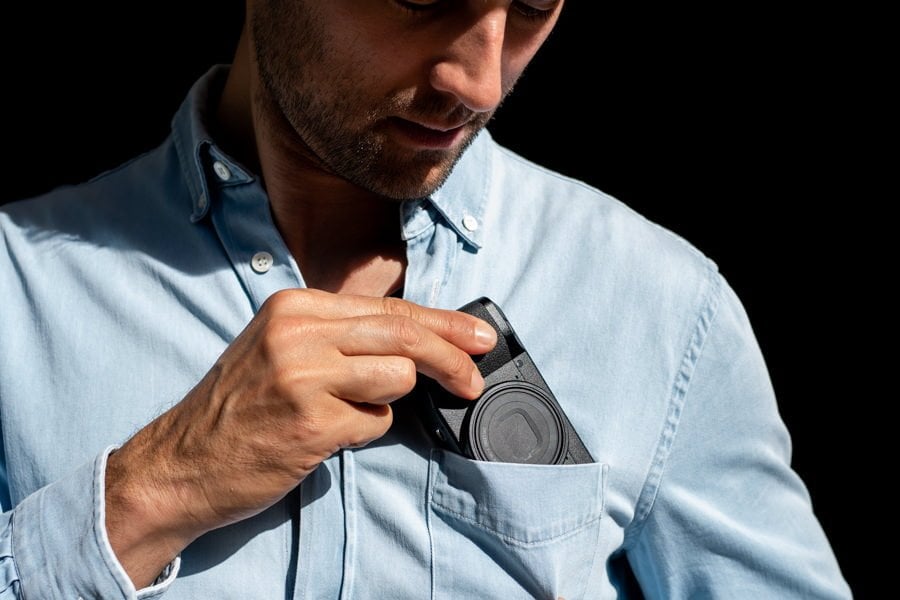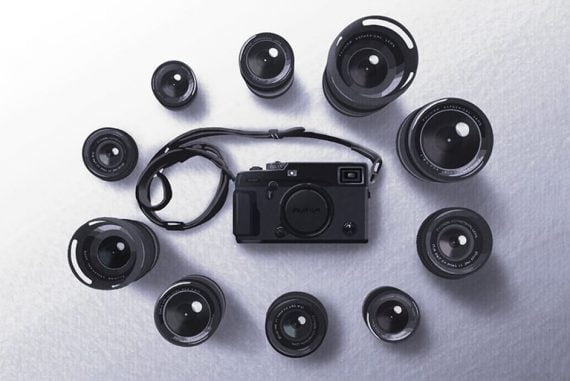
Digital Cameras That Produce Film-Like Photos
Discover affordable digital cameras that deliver the timeless quality of film, combining classic aesthetics with modern photographic technology.
Using a digital camera to take photos that look like film is a unique experience.
As much as I love the convenience of digital photography, film photography’s unrefined, timeless nature is more alluring.
Thankfully, with this guide’s digital cameras that produce film-look photos, you can have the best of both worlds.
Fujifilm X-mount cameras include film-simulation modes that make your photos look like they were shot on film stock.
(They also look like retro-cameras, adding to the experience of shooting with film.)
Older CCD-based digital cameras render more ‘filmic’ color than newer CMOS sensors.
Then, there are mobile apps that make your smartphone photos look like film, too.
Some of these digital cameras actually look like film cameras too.
Let’s take a closer look at the recommendations.
Table of Contents
What Digital Cameras Give Similar Results to Film Cameras?
Option 1: Fujifilm X-Mount Cameras
- Budget-friendly options, as well as higher-end models available
- Interchangeable lenses
- Built-in film simulation recipes
- Fujifilm is known for its film-inspired color science
- The best models have gotten very expensive on the second-hand market
- You might need to get extra lenses if you’re new to the Fuji X-Mount ecosystem
Fujifilm is a popular brand amongst film lovers. After all, “film” is in their name. It’s no surprise that they also make one of the best lines of digital cameras that can shoot film-like pictures.
The Fujifilm X series cameras have Fuji’s unique color science that can emulate film stocks built into the camera. This means that you can shoot and preset modes that emulate a variety of film stocks.
Don’t worry – I’ll cover each film stock in detail at the bottom of this section.
The Fujifilm X camera line features a variety of point-and-shoot cameras that are perfect for photography beginners or professionals wanting to experiment with some film-inspired gear.
So, which of these Fuji digital cameras is best?
The Fuji X100V not only has the Fujifilm color science, but it also has a film camera-inspired feel. All of the knobs and dials give you a tactile shooting experience that harkens back to the days of film long before whisper-quiet touch-screen cameras were even a dream.
However, the Fuji X100V is notoriously expensive. It was a high-end camera at launch, but now it costs hundreds more than its original retail price on second-hand markets.
This leads me to the next camera that I want to talk about.
The Fuji X Pro 3 is a competitive alternative to the X100V, but it’s going to cost you about half the price.

The Fuji X-Pro3 has a truly unique and retro style to it. The LCD is hidden, and you have constant access to the sub-monitor for film simulation and shooting data.
The Fuji XT30 II is also a great choice. It’s one of the most affordable Fuji cameras to offer film simulation.
I also want to mention my favorite trick for getting any of these cameras at a fraction of the price. All you need to do is buy an older model to save hundreds of bucks on your photography budget.
After all, film is known for its softness, dreamlike qualities, and lower fidelity than the latest digital cameras chase after. (Even though there are film formats, like large format, that have technically higher fidelity than even the latest digital cameras.)
Remember all those film emulation recipes that Fuji cameras come packed with? I want to highlight what each one gets you.
- Provia/Standard—Based on Fuji’s iconic Provia line of professional color reversal film, this mode is great for all subjects and produces a neutral range of colors—great for editing!
- Velvia/Vivid—Velvia is another Fuji film stock that produces richer colors and is a favorite of landscape photographers
- ASTIA/Soft—Built for portraits, fashion, and now selfies, Asita delivers balanced skin tones while adding an extra pop to the rest of the color spectrum
- Classic Chrome—The look of old black and white film documentaries with low saturation and harder shadows
- Pro Neg.Hi—This mode provides harder shadows and is built for situations where you have uncontrolled or unflattering lighting. It’s based on the PRO160NH film stock.
- Pro Neg.Std—A preset based on the PRO160NS color negative film, this stock creates nuanced skin tones and detailed tonal gradations—perfect for editing in post.
- Classic Neg—An all-around great choice for high-contrast tones and boosted colors without over-saturating the image. This is based on Fuji’s old budget-friendly film stock Superia.
- Eterna/Cinema—Eterna was designed as a motion picture film stock, which means you get extremely even tonal gradations, soft colors, and an image designed to be friendly for editing.
- Eterna Bleach Bypass—Bleach Bypass was a film editing technique where, you guessed it, developers would skip the bleaching step. This creates high-contrast images with a dramatic look.
- Black & White— A classic monochrome film option. Black & White mode also comes with Yellow, Red, and Green filter options.
- Sepia—Sepia is a straightforward mode that creates a gentle sepia tone to emulate that vintage, silver sulfide look from some of the oldest photographs out there.
- Acros—Acros was a fine-grain film stock from Fuji that is perfect for low-light shooting and high-fidelity images. Acros mode, like Black and White, also features Yellow, Red, and Green filter options.
That’s really a feast of classic film stocks!
Option 2: Older Digital Cameras with CCD Sensors
- Easily the most budget-friendly option
- You might already have a CCD camera in a box somewhere
- Shoots in a beautiful range of colors thanks to the CCD sensor
- Those early digital cameras have film-like quality that is all their own
- No built-in film emulation
- Older used digital camera might have performance issues
Welcome to the world of early point-and-click cameras. Cyber-Shot, Powershot, CoolPix, FinePix—everything pro photographers would have shrugged their shoulders at years ago is back in style!
Instead of buying a cheap film camera, have a rummage around in your drawers at home, and you might come across one of these old digital cameras instead.
The CCD sensor was the popular predecessor of the CMOS sensor that dominates today’s mirrorless world. CCD sensors were dominant from the 90s through the early 2010s until the CMOS sensor’s speed overtook the CCD’s image quality.
Today’s CMOS sensor is chasing the phantom goal of “photographic realism” and always trying to put graphic fidelity above the image itself.

Sammy K.
The CCD sensor never had hopes of a 1:1 realism but did produce outstanding colors that remind me of some kind of digital film stock.
I listed a few popular and very cheap brands of retro CCD cameras at the top of this section, but you can pick up pretty much any used camera from the 90s to get that CCD feel.
Not a budget-conscious gear shopper? Don’t worry; you can spend the price of a used car on a Leica M8 or M9 to get a CCD sensor in a very fancy package.
The best place to shop for second-hand cameras or older gear is KEH Camera.
Option 3: Sony Cameras with Film Simulation Recipes
- Works with any Sony camera that has profile settings
- In theory, you can emulate just about any film stock
- Film recipes are available all over the internet
- Can emulate film stocks from non-Sony brands
- Stuck working with Sony’s clunky menus
- Depends on how you like Sony’s color science
You don’t need to hunt for a retro camera to get a film-like effect on your next shot. You could adjust the settings of the camera you already own!
This will work with any Sony camera with adjustable profile settings. Even though digging through a Sony menu can be hard work, you’re going to be able to create customized presets that can emulate a wide range of film stocks.
This is what we call film simulation recipes. They are a series of settings you can punch into your camera to achieve a film effect in all your shots.
The trick is you have to find the right recipes to make your digital photos look like film. These recipes change individual settings like Sharpness, Saturation, and Color Depth.
It’s just like cooking—the same ingredients can yield terrible or amazing results depending on how you mix them.
You can find people selling their custom Sony profile settings all over the internet, but you can also find them for free.
Some people have even used ChatGPT to create these film emulation profiles that can accurately replicate older point-and-shoot film cameras.

Sony film simulation by Veresdenialex
I asked ChatGPT to create a Sony Picture Profile to emulate the iconic Kodachrome K135-20 film stock, and this is what it gave me:
Picture Profile:
- Gamma: Cine2 or Cine4
- Color Mode: Standard or Neutral
- Saturation: -1 to -3 (to reduce oversaturation and mimic the natural colors of Kodachrome)
- Contrast: -1 to -3 (to soften the contrast)
- Sharpness: -1 to -3 (to reduce digital sharpness)
It’s a bit rough, but a good place to start. I’ll be tweaking the Color Depth values for something a bit more authentic.
Option 4: Ricoh GR3 (in Positive Film Mode)
- Great option for an everyday camera with film settings
- Ricoh is loved by photographers for its color science
- Built in Positive Film Mode
- One of the best options for a compact camera on the market today
- Expensive compared to budget options
- Similar results with Sony, Nikon, and other cameras
The Ricoh GR3 will be another solid choice for anyone interested in creating film-like effects in camera.
This is all thanks to the Positive Film Mode. This mode applies some basic settings that transform your digital pictures into something a bit more filmic.
However, the Ricoh GR3 has another trick up its sleeve. You can adjust different preset profiles just like you can with a Sony camera to create your own film recipes.

Ricoh GR3 sample image | QiYuan
You can find different film recipes for the Ricoh GR3 posted all over the internet. Some of these are even nearly identical to the recipes posted for Sony cameras, so feel free to mix, match, and experiment to get those filmic results.
A key thing to remember is that the color and style of a developed film photograph depend on many variables. The chemistry within the negative and in the developing process can dramatically impact color and tone.
So, if someone’s Kodachrome preset isn’t working for you, feel free to adjust things until you get the look you’re after.
Option 5: Sigma DP3 Merrill
- Sigma brand reputation for budget and quality
- Distinct image style
- Adjustable settings to create something closer to film
- 46 megapixel three-layer APS-C Foveon sensor
- Hard to find (discontinued)
- More limited features
The Sigma DP3 Merrill is an interesting camera on this list, but it highlights something very important about shooting film-style photographs on a digital camera.
You won’t find the same library of film special effects settings with the Sigma DP3 Merrill that you can with other cameras from Fuji or Sony.
It’s also a little bit more restricted when it comes to entering the settings for a custom film recipe.

Sigma DP3 sample images | Sigma Global
So, what makes the Sigma DP3 Merrill worth putting on this list?
It all comes down to the Foveon sensor. This sensor has a unique photographic style and specs that still stand up to this day.
The 46 megapixels will also do you a lot of favors if you plan on creating large prints of your photographs.
What we were after here isn’t always just a camera with a preset option that says film, but cameras with unique sensors that have their own styles and give off their own film characteristics.
Option 6: Canon G7X Mark II
- Amazing film-like photos right out of the gate
- Very budget friendly even after price spikes
- Growing fanbase means more community support for repairs and troubleshooting
- Canon’s amazing color science
- Price has gone up with popularity
I couldn’t think of a better way to round out my list of cameras that can shoot just like a film camera than the Canon G7X Mark II.
If you’re into the world of niche digital cameras, film photography in the digital world, or even something like digital Lomography, you’ve probably already heard of the Canon G7X Mark II.
This camera started in the early 2010s when it was a popular choice for vloggers and digital video artists.
However, it’s become extremely popular with still photographers over the years due to the unique grain, blooming, and film-inspired color of these digital images.
There are no settings that you need to adjust, or film presets you have to toggle on. It’s just one of those minor miracles of Canon’s color science and camera design that happened to create something stunning.
What Apps Make Pictures Look Like Film?
I couldn’t write an article like this without bringing my fellow mobile photographers into the fold.
Just because you’re shooting on the latest iPhone doesn’t mean that you can’t create film-style photographs on the go.
Here are a few apps I’ve used over the years to create a variety of photograph and moving film effects for my mobile photography.
- Lightroom Mobile—First up is my go-to choice for creating film effects, Lightroom mobile. The easiest way to get a photograph that looks like it was shot on film is to sync your film presets from your desktop Lightroom app to your mobile account
- RTRO—RTRO from Moment is a great app for creating film photographs and videos. I use this primarily for creating Super 8 and VHS effects for videos, but it also works great for still photography
- Grain—Another hit app from Moment. This app lets you create custom LUTs and looks for editing videos. With a bit of playing around, you can create some powerful film-style effects
- 1998 Cam—This app offers 100s of retro filters and setting options. You can also add time and date stamps to your images like old-school disposable cameras. I’ve gotten a lot of mileage out of this app
Wrapping Up Film-Like Digital Cameras
Even if you don’t happen to have a film camera and a freezer full of expired 35, you can still shoot like even the most die-hard Lomography fan.
Digital cameras that I left off this list can still produce photographs with a film effect. You need to get clever with your settings, and you can go beyond that clinical look that digital photography tends to be biased towards.
Got any questions about film photography? Let me know in the comments, and I’ll make sure to answer your questions here or in a future article.




















